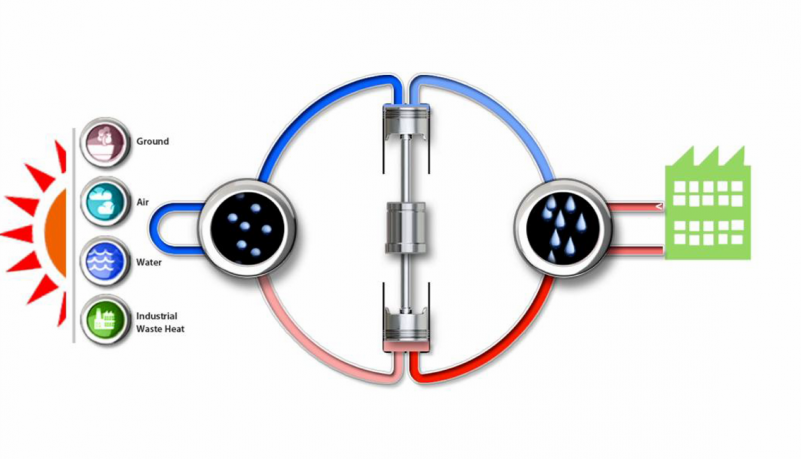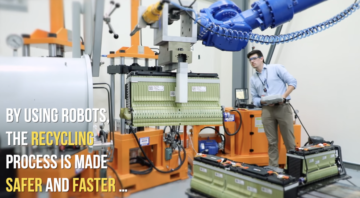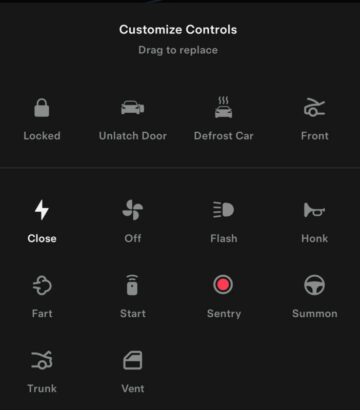
Sign up for daily news updates from CleanTechnica on email. Or follow us on Google News!
Electric heat pumps have been driving fossil fuels out of buildings and homes as electricity replaces oil and gas for heating, cooling, water heating, and drying laundry, too. That is just the tip of the electrification iceberg. Hard-to-decarbonize industries are next in line for a clean energy makeover, and the US Department of Energy is on it.
The Heat Pump Tsunami Has Begun
CleanTechnica has been spilling plenty of ink on electric heat pumps, which are common for residential heating and cooling in parts of the US where the weather is temperate. Recent improvements in the technology have expanded the range of heat pumps to include colder regions, too.
Aside from heating and cooling systems, heat pumps are beginning to emerge for hot water tanks, clothes dryers, and electric vehicles, too.
Last week, Heat Map reported that heat pumps outpaced conventional furnaces for the second year in a row, according to data compiled by the Air-Conditioning, Heating, and Refrigeration Institute.
“Though the number of shipments in the data is technically defined as ‘when a unit transfers ownership,’ it is a rough analog for sales,” Heat Map noted. “AHRI’s count for 2023, published Friday, showed that even as overall shipments were down in 2023, 21% more heat pumps were shipped than gas furnaces, up from a 12% lead in 2022.”
Just wait ’til the housing market picks up. As observed by Heat Map, installing heat pumps in a new build is a relatively straightforward exercise. Retrofitting older homes can pose financial challenges, but a new multi-state effort aimed at supporting the technology could help make the economic case for electrifying older homes, and new funding from the 2022 Inflation Reduction Act should come into play as well.
The Energy-As-A-Service Model, Heat Pump Edition
The energy-as-a-service model could also help kick the switchover into high gear, by eliminating the upfront purchase price. This kind of business model is at work in the energy efficiency field, where property owners can get an efficiency upgrade without having to bear the burden of financing the whole cost of the equipment and installation up front. The contractor shoulders that load along with operating and maintenance costs, which the client pays off incrementally. If all goes according to plan, the overall result is a drop in the client’s utility costs due to the efficiency upgrade.
For some insights on that, we turn to Europe, where the startup Aira is marketing an air-to-water heat pump under an energy-as-a-service model.
“At Aira we’ve now made it affordable with a new way to pay for your heating and hot water system. With our all-inclusive plan, you’ll have a brand-new air to water heat pump, including installation and a 10 year Comfort Guarantee including servicing, repairs and parts (terms apply), starting from € 57 per month*; a cost that’s likely lower than your current gas bills – which you’d never need to pay again,” the company explains.
By lower, Aira means that switching from a gas boiler to its new plan can reduce heating costs by up to 40%. To ice the green cake, carbon dioxide emissions could drop down to zero if electricity to run the system comes from renewable resources.
Aira is already setting up a factory in Poland to fulfill the anticipated demand, and investors are eager to pitch in. “In total, Aira has secured €195 million in equity funding and grants, establishing a strong foundation to support its ambitious long term growth objectives,” Aira states.
Hard-To-Decarbonize Industries Not So Hard Any More
So much for residential and commercial buildings. A much trickier endeavor is applying heat pumps to heavy industry. The steel industry is beginning to decarbonize with an assist from green hydrogen, but other sectors are more stubborn.
Industrial systems can require much higher heat than light-duty systems can muster, and the US Department of Energy has an answer for that. Last month, the agency’s Office of Industrial Efficiency and Decarbonization disbursed $171 million to support 49 different projects that help reduce greenhouse gas emissions from industrial sources, with part of the funding aimed specifically at industrial-scale heat pumps. Here’s a quick rundown.
Echogen Power Systems: This company specializes in recycling industrial waste heat. It won a $3 million grant to develop an air-sourced heat pump capable of reaching more than 300°C, with the goal of reducing lifecycle carbon emissions by more than 90% compared to gas heaters.
They’ll do it by harnessing one of our favorite new topics, the supercritical CO2 cycle. “The supercritical CO2 cycle enables a high coefficient of performance and high process temperatures without the need for waste heat recovery, while the fluid’s high density and heat capacity enables reduction in heat exchanger size,” the Energy Department explains.
The application of supercritical CO2 for decarbonization purposes is a new field, but A-listers including Shell, Reaction Engines, Avery Dennison, Goodyear, Mars Corporation, TotalEnergies, and Unilever have partnered with Echogen on the project, indicating good prospects for commercial adoption.
Trane Technologies: Trane is another leading industry stakeholder with decarbonization up its sleeve. It has partnered with the solar HVAC firm iAIRE and the North Carolina firm Phase Change Energy Solutions, in a project spearheaded by the University of Cincinnati. The partners will leverage a $1.4 million grant to develop “a highly efficient industrial heat pump prototype using phase change material thermal energy storage, intermediate intercooling, and wet compression technology.”
Heat Pumps For Green Potato Chips
Trane also shows up in a $3 million grant alongside the Energy Department’s Oak Ridge National Laboratory, Radiator Coils, and PepsiCo’s R&D branch. The University of Texas at Dallas is leading the project, which aims to develop a “super condenser” to recover waste heat from the chip frying process, in the form of 125°C vapor. That’s well above the operating margin of typical heat pumps.
“Current heat exchangers struggle to efficiently condense the waste heat due to the presence of oil droplets and volatile organic compounds. The proposed technology can recover and utilize the waste heat from the frying process to replace natural gas-burner heating technologies,” the Energy Department notes. As an extra green bonus, the system also recovers water.
Another approach to managing waste heat is to not produce it in the first place. Towards that end, the electric boiler firm AtmosZero and its partners — Colorado State University, the engineering firm Danfoss, International Flavors & Fragrances, and Alliant Energy — will deploy a $3.1 million grant to develop a system that can produce 200°C steam and 0°C cooling, too.
The Energy Department is already anticipating broad impact, stating that the system “will replace conventional fossil fuel-heated boilers and enable decarbonized steam production under any situation without the need for waste heat utilization.”
More & Better Materials For Heat Pumps
Considering the prominent role that Texas has been playing in the renewable energy revolution, it’s no surprise to see the University of Texas pop up more than once in the latest round of funding. The school’s Austin branch nailed down a $1 million grant contributed by the Energy Department’s Office of Advanced Materials, aimed at developing a new “semi-metallic θ-phase tantalum nitride” material suitable for high-temperature operations.
Rounding out the latest heat pump news is MIT Technology Review, which gave heat pumps the #9 slot in its 2024 list of breakthrough technologies.
“Sales have increased around the world; in the US, they have surpassed gas furnaces for the first time,” MIT noted. “New types that run at higher temperatures could help decarbonize industry, too.”
You can say that again. If you have had a recent experience with new heat pump technology, drop us a note in the comment thread.
Follow me @tinamcasey on Bluesky, Threads, Post, and LinkedIn.
Image: New industry-compatible heat pumps are among the technology improvements leading to widespread decarbonization (courtesy of US Department of Energy).
Have a tip for CleanTechnica? Want to advertise? Want to suggest a guest for our CleanTech Talk podcast? Contact us here.
Latest CleanTechnica TV Video
[embedded content]
I don’t like paywalls. You don’t like paywalls. Who likes paywalls? Here at CleanTechnica, we implemented a limited paywall for a while, but it always felt wrong — and it was always tough to decide what we should put behind there. In theory, your most exclusive and best content goes behind a paywall. But then fewer people read it!! So, we’ve decided to completely nix paywalls here at CleanTechnica. But…
Thank you!
Advertisement
CleanTechnica uses affiliate links. See our policy here.
- SEO Powered Content & PR Distribution. Get Amplified Today.
- PlatoData.Network Vertical Generative Ai. Empower Yourself. Access Here.
- PlatoAiStream. Web3 Intelligence. Knowledge Amplified. Access Here.
- PlatoESG. Carbon, CleanTech, Energy, Environment, Solar, Waste Management. Access Here.
- PlatoHealth. Biotech and Clinical Trials Intelligence. Access Here.
- Source: https://cleantechnica.com/2024/02/12/industrial-heat-pumps-are-coming-for-your-fossil-fuels/
- :has
- :is
- :not
- :where
- $1 million
- $3
- $UP
- 1
- 10
- 15%
- 2022
- 2023
- 2024
- 36
- 4
- 49
- a
- above
- According
- Act
- Adoption
- advanced
- Advertise
- Affiliate
- affordable
- again
- aimed
- aims
- AIR
- All
- along
- alongside
- already
- also
- always
- ambitious
- among
- an
- analog
- and
- Another
- answer
- Anticipated
- anticipating
- any
- Application
- Apply
- Applying
- approach
- ARE
- around
- AS
- assist
- At
- austin
- Avery Dennison
- Bear
- been
- Beginning
- behind
- BEST
- Better
- Bills
- Bit
- bluesky
- Bonus
- Branch
- breakthrough
- broad
- build
- buildings
- burden
- business
- business model
- but
- by
- CAKE
- CAN
- Can Get
- capable
- Capacity
- carbon
- carbon dioxide
- carbon emissions
- Carolina
- case
- challenges
- change
- chip
- clean
- clean energy
- cleantech
- Cleantech Talk
- client
- Colorado
- come
- comes
- comfort
- coming
- comment
- commercial
- Common
- Companies
- company
- compared
- compiled
- completely
- content
- Contractor
- contributed
- conventional
- CORPORATION
- Cost
- Costs
- could
- count
- courtesy
- Current
- cycle
- Dallas
- data
- decarbonization
- decarbonize
- decide
- decided
- defined
- Demand
- density
- Department
- Department of Energy
- deploy
- develop
- developing
- different
- do
- don
- down
- driving
- Drop
- due
- eager
- Economic
- efficiency
- efficient
- efficiently
- effort
- Electric
- electricity
- electrification
- electrifying
- eliminating
- embedded
- emerge
- Emissions
- enable
- enables
- end
- endeavor
- energy
- energy efficiency
- Engineering
- Engines
- equipment
- equity
- equity funding
- establishing
- Ether (ETH)
- Europe
- Even
- exchangers
- Exclusive
- Exercise
- experience
- Explains
- extra
- factory
- Favorite
- felt
- fewer
- field
- financial
- financing
- Firm
- First
- first time
- flavors
- For
- form
- fossil
- fossil fuels
- Foundation
- Friday
- from
- front
- fuels
- Fulfill
- funding
- GAS
- gave
- Gear
- get
- goal
- Goes
- good
- grant
- grants
- Green
- greenhouse gas
- Greenhouse gas emissions
- Growth
- guarantee
- Guest
- had
- Hard
- Harnessing
- Have
- having
- heavy
- help
- here
- High
- higher
- highly
- Homes
- HOT
- housing
- housing market
- HTML
- HTTPS
- hvac
- ICE
- if
- Impact
- implemented
- improvements
- in
- include
- Including
- increased
- indicating
- industrial
- industries
- industry
- inflation
- insights
- installation
- installing
- Institute
- Intermediate
- International
- into
- Investors
- IT
- ITS
- just
- kick
- Kind
- laboratory
- Last
- latest
- lead
- leading
- Leverage
- lifecycle
- like
- likely
- likes
- Limited
- Line
- links
- List
- load
- Long
- lower
- made
- maintenance
- make
- managing
- Margin
- Market
- Marketing
- mars
- material
- materials
- me
- means
- Media
- million
- MIT
- model
- Month
- more
- most
- much
- multi-state
- National
- Natural
- Need
- never
- New
- New Funding
- news
- next
- no
- North
- north carolina
- note
- noted
- Notes
- now
- number
- oak
- Oak Ridge National Laboratory
- objectives
- observed
- of
- off
- Office
- Oil
- Oil and Gas
- older
- on
- once
- ONE
- operating
- Operations
- or
- organic
- Other
- our
- out
- overall
- owners
- ownership
- part
- partnered
- partners
- parts
- Pay
- pays
- People
- per
- performance
- phase
- Picks
- Pitch
- Place
- plan
- plato
- Plato Data Intelligence
- PlatoData
- Play
- player
- playing
- Plenty
- podcast
- Poland
- policy
- pop
- pose
- Post
- power
- presence
- price
- process
- produce
- Production
- project
- projects
- prominent
- property
- proposed
- prospects
- prototype
- publish
- published
- pump
- pumps
- purchase
- put
- Quick
- R&D
- reaching
- reaction
- Read
- Reader
- recent
- Recover
- Recovers
- recovery
- recycling
- reduce
- reducing
- reduction
- regions
- relatively
- Renewable
- renewable energy
- repairs
- replace
- Reported
- require
- residential
- Resources
- result
- Role
- round
- ROW
- Run
- sales
- say
- Second
- Sectors
- Secured
- see
- servicing
- setting
- Shell
- shipped
- should
- shoulders
- showed
- Shows
- situation
- Size
- slot
- So
- solar
- some
- spearheaded
- specializes
- specifically
- stakeholder
- Starting
- startup
- State
- States
- stating
- Steam
- steel
- storage
- Stories
- straightforward
- strong
- Struggle
- suggest
- suitable
- support
- Supporting
- surpassed
- surprise
- system
- Systems
- T
- Talk
- team
- technically
- Technologies
- Technology
- term
- terms
- texas
- than
- that
- The
- the world
- then
- theory
- There.
- thermal
- they
- this
- time
- tip
- to
- too
- Topics
- Total
- tough
- towards
- transfers
- Tsunami
- TURN
- tv
- types
- typical
- under
- unilever
- unit
- university
- University of Cincinnati
- Updates
- upgrade
- us
- uses
- using
- utility
- utilization
- utilize
- Ve
- Video
- volatile
- wait
- want
- was
- Waste
- waste heat recovery
- Water
- Way..
- we
- Weather
- week
- WELL
- were
- What
- which
- while
- WHO
- whole
- will
- with
- without
- Won
- Work
- world
- write
- Wrong
- year
- you
- Your
- youtube
- zephyrnet
- zero





